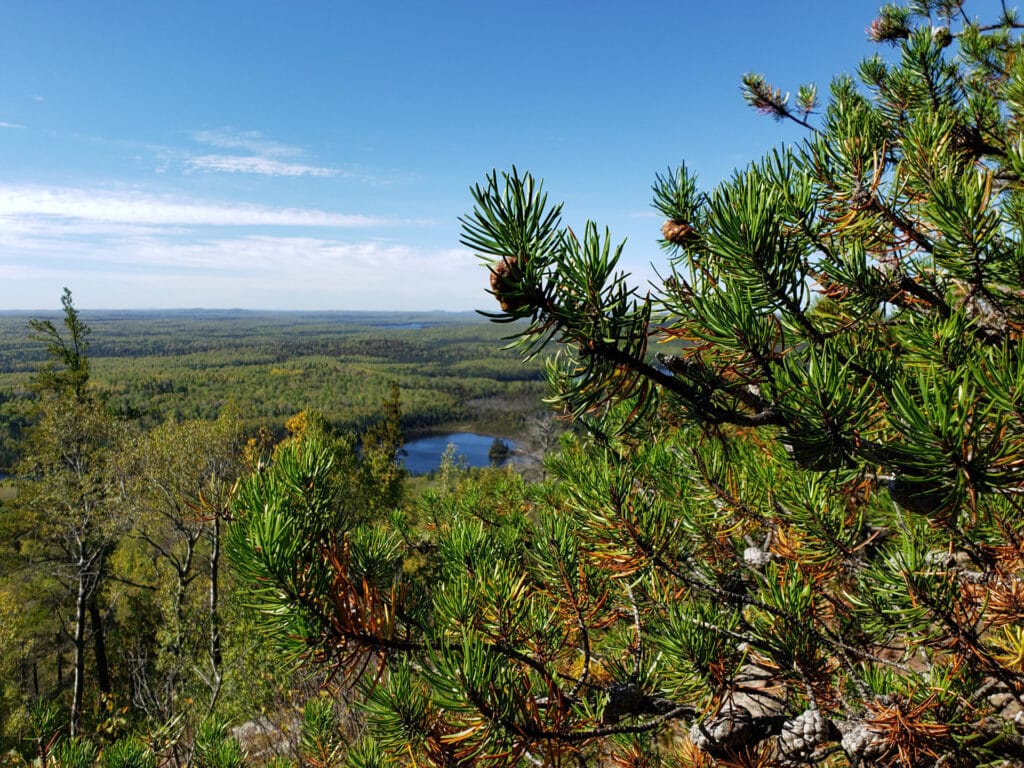
Minnesota’s northern forests are changing with a warming climate, and Superior National Forest and partners have a plan to adapt.
The boreal forest stretches around the globe in the northern hemisphere, covering much of Canada, Scandinavia, and Siberia. It only dips into the United States in northern Minnesota, where its southern fringe is found in and around the Superior National Forest. This extremity is expected to slowly shift north as the climate warms over the next several decades, and now, the Forest Service is planning how to respond.
“In the warmer, southern boreal forests, the situation is quite different [from the northern edge],” researchers recently wrote. “Here, conditions have become too warm for cold-adapted boreal trees, slowing their growth and even leading to their death. With warming comes dryness, and water stress leaves trees more susceptible to insect infestation and fires, as Canada has experienced in 2023 and Siberia in 2019 and 2020.”
The Superior National Forest recently announced it is the first National Forest in the nation to initiate an “Assisted Migration Plan,” which seeks to help the forest along as it changes.
“Ultimately, the projected changes in climate will exceed the natural migration, dispersal, and adaptation abilities of many tree species that are now common on the SNF and could lead to increased mortality and decreased ecosystem productivity and carbon sequestration,” the agency said in its announcement.
Orderly transition
The new pilot program is intended to guide management to replace boreal tree species with species more suitable to a warmer climate. Currently common species like balsam fir, black spruce, paper birch, quaking aspen and white spruce are expected to find less hospitable habitat in the future Superior National Forest, and without assistance, the forest could become much less productive and diverse.
The plan was developed with extensive input from individuals and organizations from within and without the Forest Service. Partners include Native American tribes, the Minnesota Department of Natural Resources, the University of Minnesota, the Nature Conservancy, and others.
“During the development of the plan, it has been fully demonstrated that a cross-disciplinary team is crucial,” says Katie Frerker, Climate Adaptation Specialist, “We have over 20 organizations and over 100 individuals involved on our voluntary AM Pilot Plan team. The integration of scientific, social, operational, and cultural considerations and discussion has been amazing.”
Types of transitions
The plan includes two of three types of assisted migration, according to the Forest Service:
- “Assisted population migration involves the human-assisted movement of seed sources or populations to new locations within the historical established range of a species. For example, planting jack pine on the forest from seeds collected just south of the forest.
- “Assisted range expansion is the human-assisted movement of seed sources or populations from their current range to suitable areas just beyond their current range, facilitating or mimicking natural dispersal and range expansion. For example, planting swamp white oak on the forest, a species native to southern MN, to ameliorate the effects of emerald ash borer.”
Some climate mitigation and assisted migration practices have already been put in practice over recent years. The Nature Conservancy and other organizations have been planting native trees with seedlings developed from more southerly sources. It’s hoped their genetics will help them adapt to a warmer climate and longer growing season. In 2021, an effort was initiated to grow more resilient tree seedlings in greenhouses for use in planting projects.
More information:
- Superior National Forest Introduces Assisted Migration Plan for the National Forest System – U.S. Forest Service
- Assisted Migration – U.S. Forest Service Climate Change Resource Center
- Minnesota’s boreal forest is a climate change hot spot – MPR News

